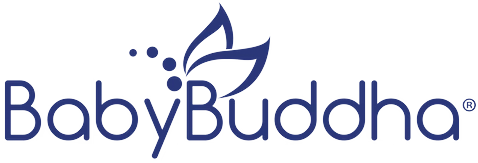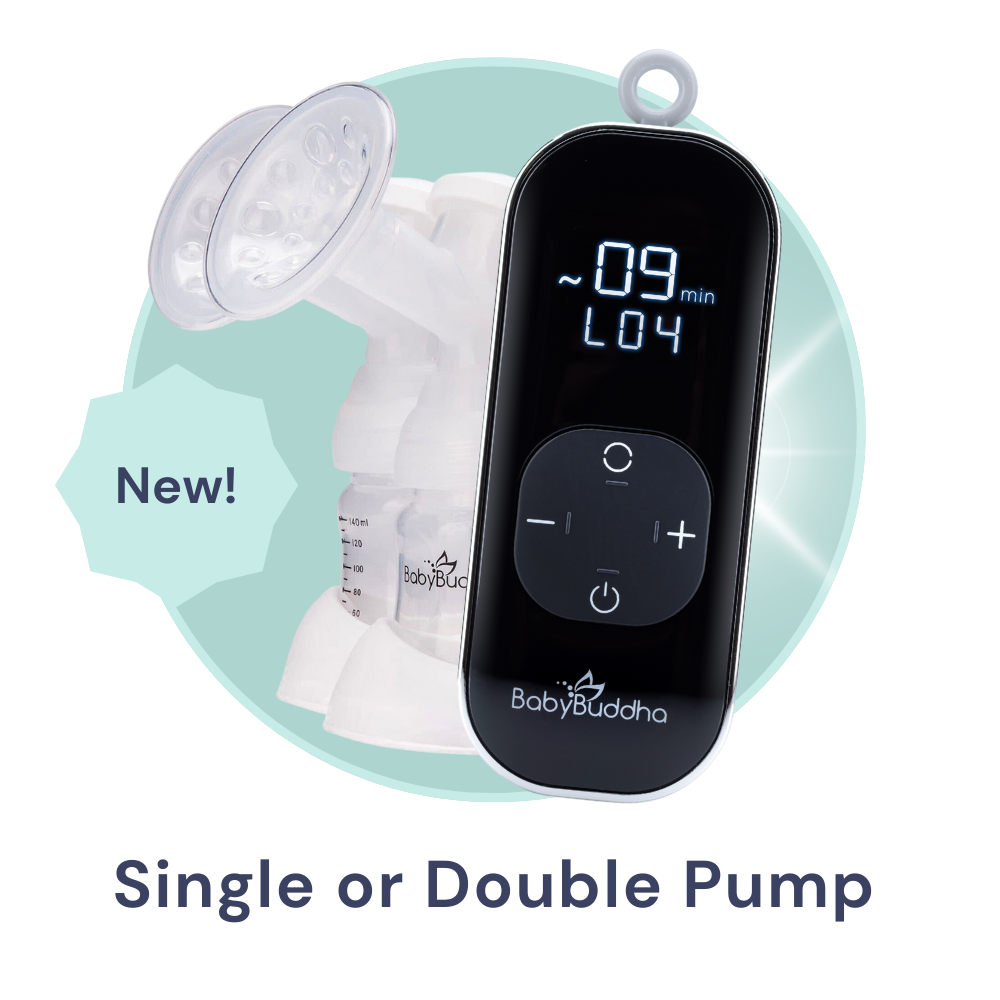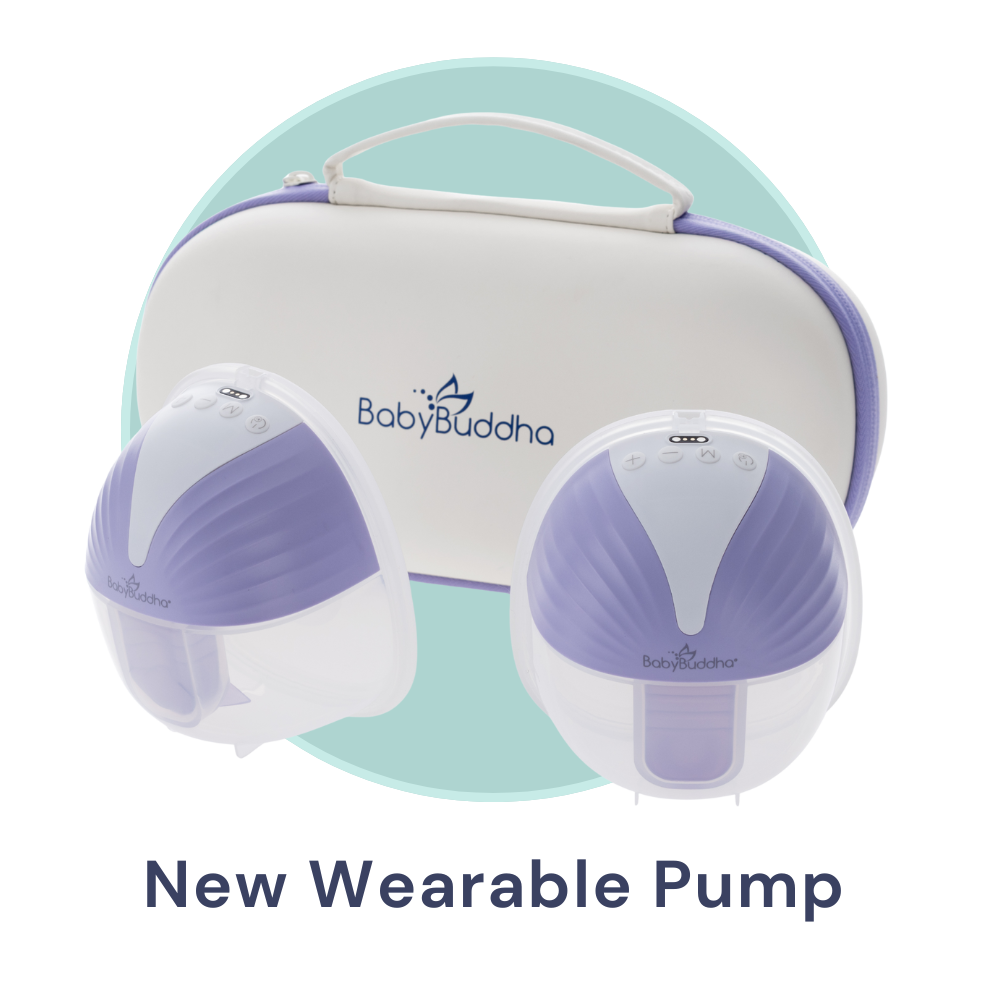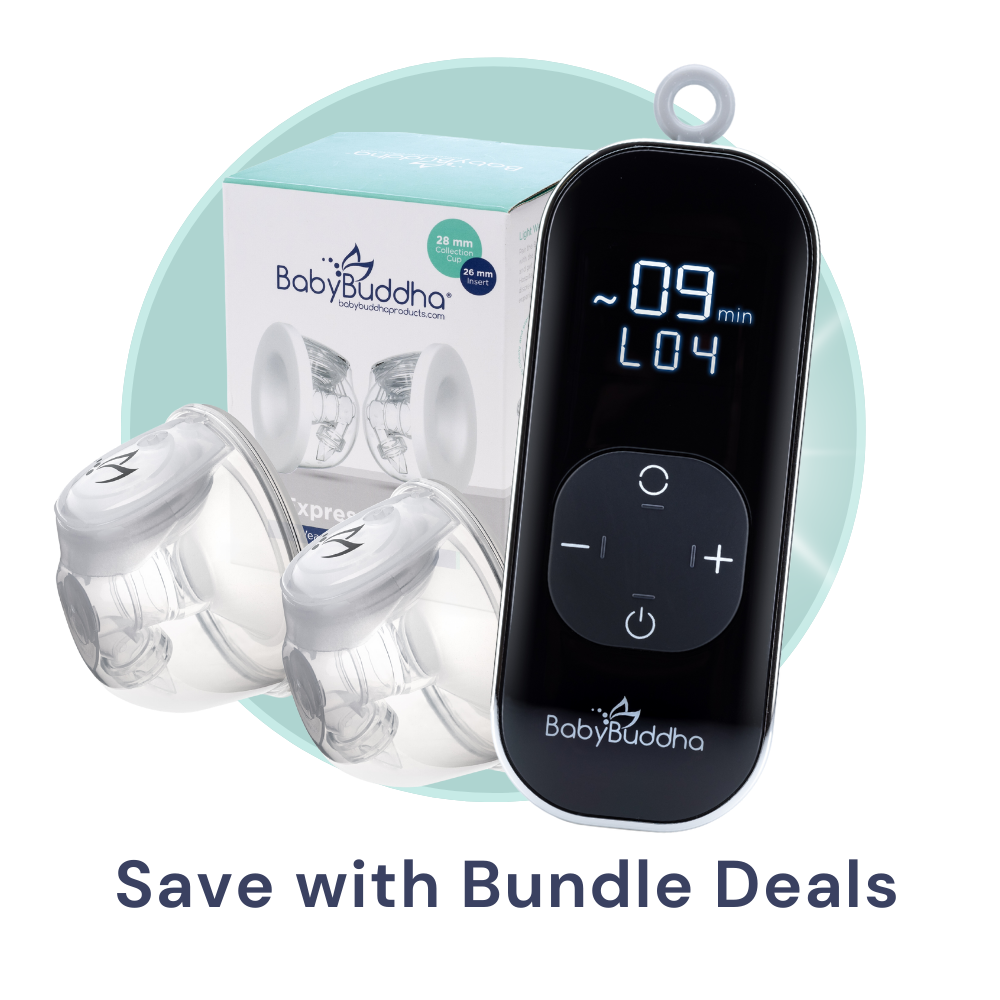New motherhood brings on many challenges and unknowns, but using your breast pump does not have to be one of them. One of the first decisions many breastfeeding mothers make is which breast pump to purchase and what kind will best suit their needs.
A manual pump has many advantages, the biggest being the ease of pumping on the go without the need for a power source. Whether you are a frequent traveler or a stay-at-home parent, a manual pump can be used whenever and wherever, without the need for charging or power cords.
Manual pumps are fantastic, especially when used in conjunction with electric pumps. Double electric breast pumps are far more powerful, more customizable, and still very quiet and discreet.
Manual Breast Pumps: How They Can Help
Many moms who primarily nurse their babies opt for a manual pump to relieve engorgement between feedings. It is also an excellent option for those who like to pump on one side and feed from the other.
Many moms report a greater production when simultaneously nursing and pumping, as the hormones from feeding the baby increase milk production. Then, the pump is able to express and collect any milk released in a feeding and pumping session, especially during active letdowns.
Even if you choose to have an electric breast pump, a manual version is an excellent backup to have (and know how to use). In times of travel, on long car rides, or in case of emergency, or power outage, an on-the-go manual backup can help more than you think. Manual pumps can also be a big help when experiencing clogged milk ducts. They make a wonderful addition to your diaper bag.
The Similarities and Differences Between Electric and Manual Pumps
The Similarities
The first few steps when pumping are generally the same whether you’re using an electric or manual pump:
You’ll want to wash your hands and make sure the pump parts are clean. You’ll need to apply the correct size flange and adjust so your nipple is in the center and your breast fits comfortably within it.
The Differences
When using a manual pump, it is recommended to massage the breast and hand-express first to get the milk flow started. With an electric pump, you can utilize the different settings and let the machine do the hard work. With a manual pump, you’ll use a handle to physically pump the milk, having complete control of the speed, rhythm, and suction strength.
Note: It is also recommended to hand express after a pumping session to further fully empty the breast tissue if needed.
When your pumping session is over, you will have to clean and disinfect any parts that came into contact with your breast or milk for both. However, cleaning and storing a manual pump tends to be easier as it’s typically much smaller with fewer parts than an electric pump.
With the difference in total parts, functional differences, and size, the manual pump is a more affordable option or addition to complement the use of an electric pump or serve as a backup option should the need arise.
6 Steps To Using Your Manual Pump
Once you familiarize yourself with your manual breast pump's instructions, you can follow these simple steps for a successful manual pumping session.
Keep in mind that the instructions below are for the BabyBuddha Manual Breast Pump.
1. Clean and Sanitize
Make sure everything is clean — from the breast pump to your wash basin. Always wash your hands for at least 20 seconds with soap and warm water prior to pumping or hand-expressing milk. Do not put on hand lotion or cream (these could possibly contaminate the milk).
If the pump needs to be cleaned, now is the time to disassemble it and sanitize the parts by flash-boiling them.
2. Component Assembly
Check that the pump is put together correctly and in perfect working order (no cracks, chips, or general wear and tear).
The pump body should have the correct size flange attached based on your personal flange fit. The flange will be attached to the flange body. Tightly screw the bottle onto the pump body so the duckbill valve can drop milk right into the bottle.
3. Hands-On Massage
Massage your breast tissue. If you feel any hard areas in the breast tissue forming in specific areas, massage those areas first and hand-express a few drops of milk. Work two fingers in circular motions from the outer breast to the nipple. This will help get the flow started for your pumping session. A clean, warm, damp washcloth on the breast can also help get clogs out.
Attach the flange to your breast. You want your nipple as centered as possible for maximum milk production and minimal discomfort. You want your entire nipple to fit inside the flange with a snug fit — not too big or too small. If the flange is causing pain, nipple crowding or rubbing, or redness, check your flange’s fitting guide.
4. Starting To Pump
Begin pumping by squeezing the handle on your pump. Don’t get discouraged if it takes a few moments to see milk appear; this is generally normal and mimics what happens when nursing your baby.
To trigger a letdown, use short and quick handle motions. When a letdown is achieved, or milk starts flowing freely, switch to slower and longer handle motions for optimal milk removal. Switch between these two rhythms as needed to stimulate additional letdowns.
5. Switch It Up
Switch sides every five minutes or so if you are manually pumping on both sides. Repeat until you’ve pumped a total of 15 to 20 minutes on each side or until feeling empty to complete a full pumping session.
Change up the rate of your pumping to best mimic your baby’s suction. You should get the hang of it after a few minutes. If you feel you aren’t producing enough milk, try slowing down or speeding up to see what your body best reacts to. Sometimes slower, stronger pumps are best when your breast is full.
The BabyBuddha Manual Pump has two modes, partly for this reason. Level 1 is gentle and stimulates letdown, while Level 2 is stronger and encourages maximum milk expression.
6. Safe Storage and Cleaning
Remove the pump from the breast tissue and unscrew the bottle. Place a cap on the bottle or transfer your milk to the desired method of safe milk storage and store it according to the CDC guidelines, then clean your pump parts.
You’ll want to disassemble the flange and valve to clean each part properly and let them air dry. You can sterilize parts after cleaning by flash-boiling them for no longer than 60 seconds.
Can You Use Two Manual Pumps at Once?
If you’re in a time crunch or trying to simulate a more powerful electric pump, you can use two manual pumps. This is a bit more tiring as you will need two free hands and pump simultaneously, but it could effectively cut your pumping time in half.
This practice is referred to as double pumping, and it can increase milk production by providing stronger stimulation. You may possibly end up with more milk in the long run.
You’ll need to purchase two manual pumps in order to do this, but it still may be more cost-effective than an electric variation.
Tips for Increased Milkflow
If you’re unsatisfied with your milk production, a few things could help get a steady flow. Some dietary adjustments, such as staying hydrated and eating certain snacks, help with milk production as a whole.
However, there are other things you can try at the moment to get the flow going when you’re struggling with a pumping session:
If you tend to have more success when breastfeeding, think about your baby. Imagine them nursing, look at a picture of them, or watch a video. It may sound silly, but your body is inclined to produce milk in response to your baby’s needs. Doing these things can trick your body into thinking you’re actively feeding your baby.
Pumping more frequently or pumping right after nursing can increase the supply. Your body tends to produce milk based on demand, so naturally, increasing the demand will increase your output.
If you’ve tried these things without luck, you may consider adjusting your flange size. If your flange does not fit, especially if it is too small, it may hinder the milk flow.
Clogged/Plugged Ducts: What To Do
Many breastfeeding moms rely on manual pumps to relieve clogged milk ducts. Plugged milk ducts are painful and, unfortunately, common. They feel like painful lumps in the breast when a milk duct is clogged, and pressure builds up around it.
Use a Manual Pump/Apply Pressure
It can help to use a manual pump to increase the amount of milk-expressing you’re doing and relieve pain between nursing sessions.
Apply pressure to the clogged area before pumping to try to break apart the clogged milk area. A warm compress or hot shower can help with this, as well. When you pump, you can adjust the angle of the pump until you feel the most sense of relief.
Adjust the Pump Position
When breastfeeding, the baby’s nose or chin is pointed toward the duct. You can slightly adjust the angle of the pump to simulate that.
Try Dangle Pumping
Dangle pumping is a common way to allow gravity to help you release your clogged duct. You can lay on your stomach and hang off of a bed or couch or kneel on all fours on the floor to allow the breast to dangle down while pumping.
This is a little more challenging with a manual pump, but not impossible if you get creative. You can also lean forward a bit to create a similar effect.
In Summary
Pumping is a task, whichever way you choose to do it. It’s essential to consider your lifestyle and specific needs when deciding on an electric pump, manual pump, or both. A manual pump is easy to use once you get the hang of it and can be helpful in many situations.
With easy instructions, excellent reviews, and a very reasonably cost-effective price, the manual breast pump from BabyBuddha is a comfortable, powerful, and easy-to-use option for your manual pumping needs.
Sources:
Breast Engorgement | Causes, Complications & Treatment | Cleveland Clinic
Plugged Milk Ducts | Johns Hopkins Medicine
Breastmilk Production | Sutter Health
Pumping Milk | La Leche League International
Foods that help lactation: Diet tips and recipes | Medical News Today
How to Increase Breast Milk Supply by Pumping | Verywell Family
Proper Storage and Preparation of Breast Milk | Breastfeeding | CDC








